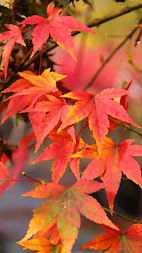Weeping Japanese Maples V/S Laceleaf Maples
Maples: Weeping and Laceleaf
Weeping Japanese maples and laceleaf maples are both popular ornamental trees that add beauty to gardens, parks, and landscapes. While they have many similarities, they also have some distinct differences that can help you differentiate between them.
In this blog, we will explore the differences between weeping Japanese maples and laceleaf maples, and explain why weeping Japanese maples are considered to be better.
Weeping Japanese Maples vs. Laceleaf Maples
Weeping Japanese maples and laceleaf maples are both part of the Aceraceae family, which includes all species of maple trees. However, they differ in their growth habits, leaf shape, and color.
Weeping Japanese Maples
The leaves of weeping Japanese maples are deeply dissected, with each lobe being narrow and elongated. They are typically green, but can also be red, purple, or variegated. In the fall, the leaves turn vibrant shades of orange, red, and yellow.
Weeping Japanese maples are generally hardy and low-maintenance, making them a popular choice for gardeners who want an ornamental tree that doesn't require a lot of attention.
Laceleaf Maples
The leaves of laceleaf maples are deeply dissected, with each lobe being finely serrated and toothed. They are typically purple or red, but can also be green or variegated. In the fall, the leaves turn shades of red, orange, and yellow.
Laceleaf maples require more attention and care than weeping Japanese maples, as they are prone to leaf scorch and can be damaged by harsh winds and extreme temperatures.
Why Weeping Japanese Maples Are Better?
While both weeping Japanese maples and laceleaf maples are beautiful ornamental trees, weeping Japanese maples are generally considered to be better for several reasons.
More Hardy and Low-Maintenance
Weeping Japanese maples are generally hardy and low-maintenance, making them a popular choice for gardeners who want an ornamental tree that doesn't require a lot of attention. They can tolerate a wide range of soil types and pH levels and are resistant to many pests and diseases.
Dramatic and Eye-Catching
Weeping Japanese maples are known for their cascading, weeping branches that create a dramatic effect on any landscape. Their unique shape and form make them a focal point in any garden or park, and they can be used to create a sense of height and depth in a landscape design.
Beautiful Fall Color
Weeping Japanese maples have beautiful fall color, with leaves turning vibrant shades of orange, red, and yellow. This makes them a great choice for adding color to a landscape design and can help create a sense of seasonal change and transition.
Diverse Range of Varieties
There are many different varieties of weeping Japanese maples, each with its own unique characteristics and colors. This means that there is a weeping Japanese maple to suit almost any landscape design, from small gardens to large parks.
Conclusion
In conclusion, weeping Japanese maples and laceleaf maples are both beautiful ornamental trees that can add value and beauty to any landscape design. While laceleaf maples are also popular, weeping Japanese maples are generally considered to be better due to their hardiness, low maintenance, dramatic effect, beautiful fall color, and diverse range of varieties.
If you are considering adding a weeping Japanese maple to your landscape, it is important to choose the right variety for your specific needs. Some popular varieties include the Red Dragon, the Crimson Queen, and the Tamukeyama. You should also consider the size and shape of the tree, as well as its growth rate, to ensure that it will fit into your landscape design.



Comments
Post a Comment